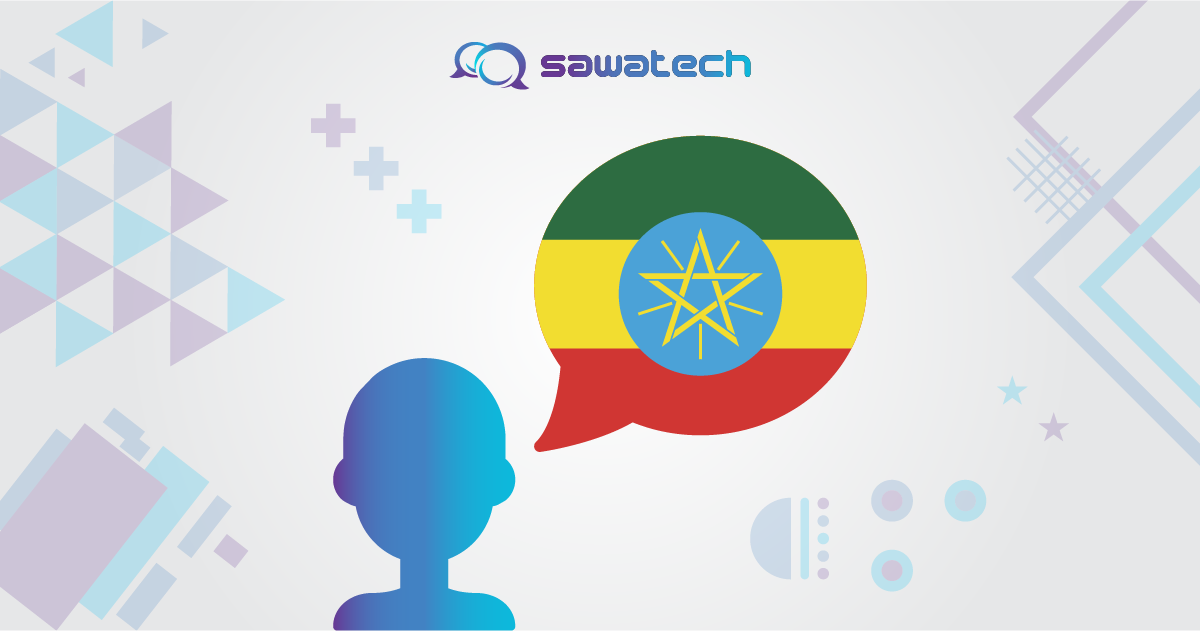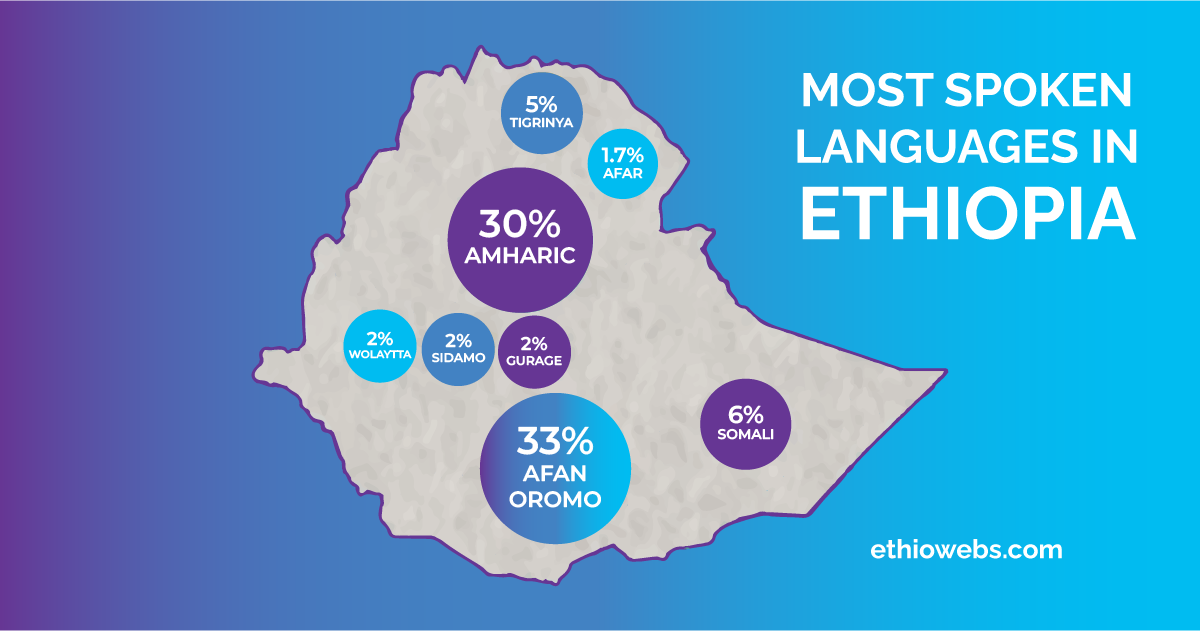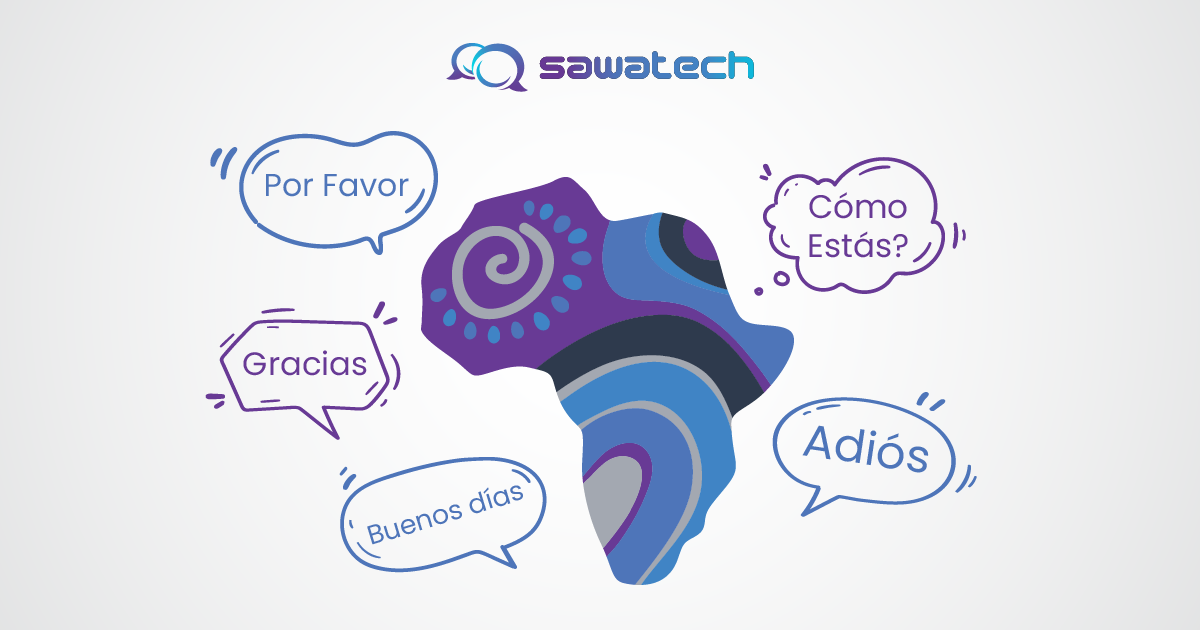Ethiopia’s linguistic diversity is as vast as its cultural heritage. With over 80 languages and a population of 115 million, Ethiopia represents a vibrant market with great potential. For businesses aiming to grow in this unique environment, understanding the linguistic landscape is a critical first step toward effective communication and localization.
The top two most widely spoken languages in Ethiopia are Oromo and Amharic. Continue reading this blog to get an overview of the top languages spoken in Ethiopia.
What Are the Official Languages of Ethiopia?
Ethiopia has several official languages, each important in governance, education, and media. This linguistic diversity is a testament to the country’s rich cultural heritage and the coexistence of various ethnic groups.
Federal Languages
Amharic, Oromo, Tigrinya, Somali, and Afar are the five official languages acknowledged by the Ethiopian federal government.
These languages are vital in promoting communication across Ethiopia’s diverse regions and ensuring accessibility in government operations, education systems, and public services.
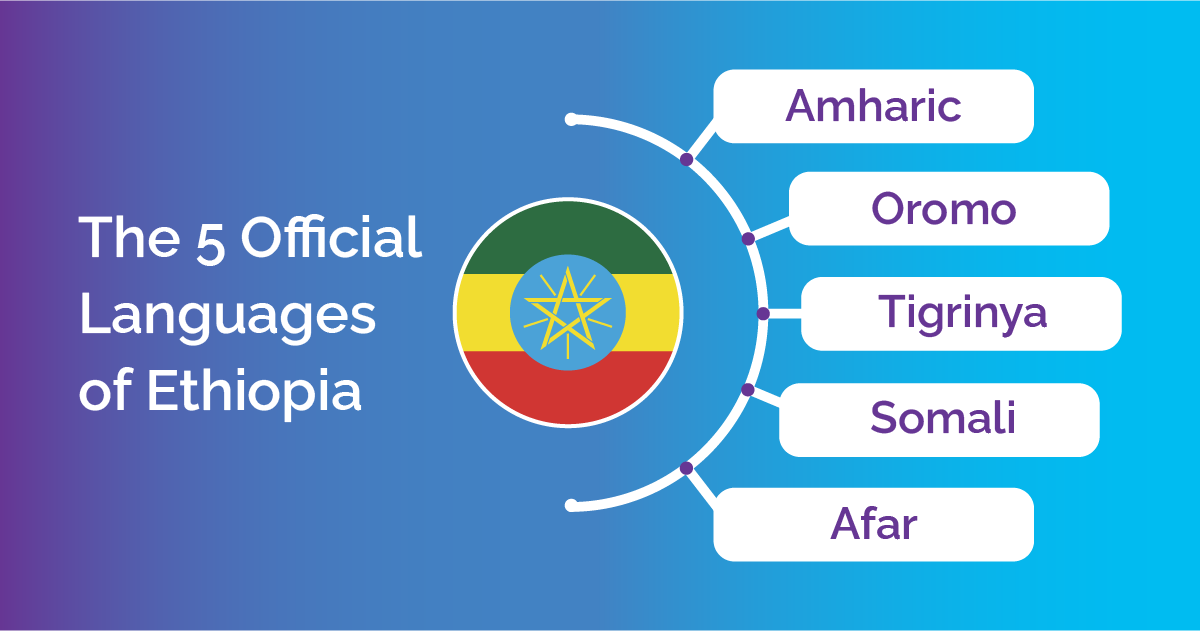
Amharic
Amharic, the language of the Ethiopian federal government, has historical significance because it was once the only official language of the nation. Even today, it is still a cornerstone of Ethiopian identity and culture.
As the working language of the government and widely spoken by millions, Amharic continues to play a key role in administration, education, and media. For businesses and companies aiming to reach Ethiopia’s national audience, providing information in Amharic is a strategic benefit. To speak Amharic, Amharic translation services are your choice for effective communication.
Other Official Languages:
While Amharic is the working language of the federal government, Ethiopia has a varied range of languages. Oromo, Tigrinya, and Somali. Each of these languages possesses unique cultural and historical significance, contributing to the country’s rich linguistic heritage.
Oromo
The most spoken language in Ethiopia, with over 25,000,000 speakers. The Oromia Region, a major economic hub, mainly relies on Oromo. Its prominence is further amplified by the important contribution of the regions to Ethiopia’s economy, especially in agriculture and trade. Its cultural relevance demands specialized translation services for businesses wishing to tap into this market.
Tigrinya
Primarily spoken in the Tigray Region and across the border in Eritrea. It is a key regional language as it is used in media, education, and government communication.
Businesses that target Eritrean markets or operate in northern Ethiopia can greatly benefit from incorporating Tigrinya into their communication strategies.
Somali
The Somali language is the official language of Somalia and is widely spoken in Ethiopia’s Somali Region. By incorporating the Somali language into localized communication, businesses can extend their market and reach more target audiences.
Other Significant Languages (Apart from the Official Languages)
Ethiopia has a diverse range of regional languages such as Sidamo, Wolaytta, and Gurage. Recognizing these languages in localization strategies helps businesses connect with varied Ethiopian groups and communities.
Language Families and Dominant Regional Languages.
Afroasiatic Languages
While the five official languages dominate Ethiopia’s linguistic scene, the country’s regional languages also play an influential role.
Many of these belong to the Afroasiatic language family, with the Semitic and Cushitic branches leading the way:
- Semitic Languages: Besides Amharic and Tigrinya, other Semitic languages like Ge’ez, used in religious texts, hold cultural and historical importance.
- Cushitic Languages: Languages like Sidamo, Hadiya, and Agaw enrich Ethiopia’s linguistic diversity. Businesses targeting these communities benefit from understanding their linguistic nuances.
The Nilo-Saharan Language Family
Ethiopia’s linguistic diversity extends beyond Afroasiatic languages to include the Nilo-Saharan language family, spoken in Ethiopia’s western regions; languages like Nuer and Anuak add to the country’s multicultural fabric. These language families have a role in preserving the unique cultural identities of smaller ethnic groups.
The Ge’ez Script
Ethiopia’s Ge’ez script, also known as Fidel, is one of the oldest alphabets still in use today. The ancient Ge’ez language was historically used for religious texts and continues to play a key role in Ethiopia’s cultural heritage.
Today, it is the official script for Ethiopian languages such as Amharic and Tigrinya, and it is integral to liturgical writings in the Ethiopian Orthodox Church.
It is integral to several languages, including Amharic and Tigrinya. Businesses must account for their unique structure when localizing content, ensuring accuracy and cultural relevance.
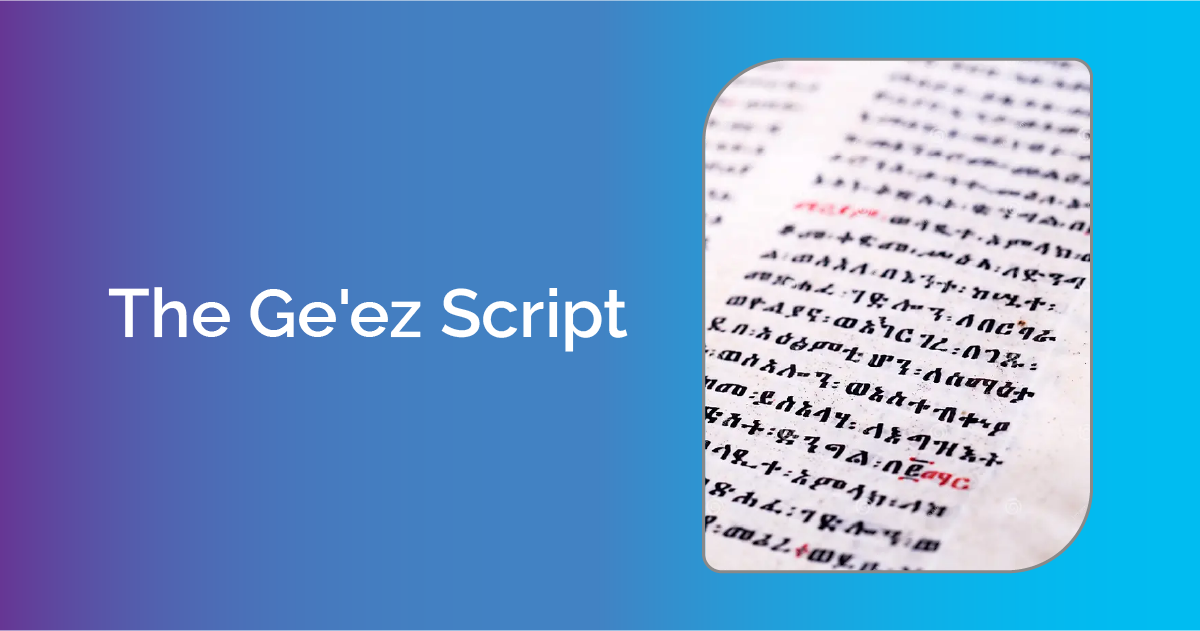
The Importance of Localization for the Ethiopian Market
Ethiopia’s growing economy offers numerous opportunities in sectors like agriculture, technology, and tourism, so it is your turn to tailor your communication and prepare for market expansion.
Understanding the diversity of languages spoken in Ethiopia is essential for effective communication and localization strategies, and using regional languages like Oromo, Somali, or Tigrinya ensures messages resonate with local communities.
Localization and translation enable businesses to align with Ethiopian cultural values and build trust and strong connections.
Conclusion
These days, for businesses, the diversity of Ethiopian languages is both a challenge and an opportunity, but by prioritizing professional localization services, you can create lasting relationships and realize this vibrant market’s full potential. For effective communication and market expansion, you must think well and choose your translation and localization partner.
Contact us today.
How sawatech Can Help
Navigating Ethiopia’s linguistic diversity is no small task.
At sawatech, we provide Ethiopian language localization services. Our team includes native speakers of Amharic, Oromo, Tigrinya, Somali, and other Ethiopian languages, ensuring linguistic and cultural accuracy.
We customize solutions to your business needs whether you need website localization, multimedia translation, or more.

